1. The "Mother of the Tube"
1.1. Huda
1.1.1. 27 year old civil Engineer
1.1.1.1. IVF patient
1.1.1.2. Favorite Inhorn interviewee.
1.1.2. Father supported her IVF treatment both financially and economically.
1.1.3. Suffered from irreparable tubal infertility and a missing ovary.
1.2. Decided on Dr. Zaki for IVF treatment.
1.2.1. She suffers from financial concerns as well as distrust in regulation as well as how advanced local IVF treatment is compared to the West.
2. (In)efficacy of NRT's
2.1. Woman's characteristics affect success rates.
2.1.1. Woman's age and couples diagnosis one factor.
2.1.1.1. fertility declines after the mid-thirties for women.
2.2. Characteristics of the IVF process the second factor
2.2.1. particularly the number of embryo's transferred to a woman's body during the treatment cycle.
2.3. Repetition is the third issue affecting efficacy.
2.3.1. meaning the need to repeat IVF or ICSI procedures several times before success.
2.4. Fourth factor: success rates affected by the quality of care at an IVF center.
2.4.1. Is the centers personnel qualified and experienced.
3. Egyptian game of Inflation
3.1. Lack of agreed upon definition of Egyptian IVF centers of what constitutes a successful pregnancy.
3.2. The attempt to inflate success rates by eliminating all women over the age of forty
3.3. The introduction of ICSI at some centers, which can significantly lower success rates but is rarely presented as such.
3.4. The lack of uniform standards for informed consent.
3.5. The lack of uniform standards for record keeping.
3.6. The lack of any form of effective regulation or monitoring of Egyptian centers on a national level.
4. Positioning Egypt in the Discourse of Hope
4.1. NRT's=hope technologies
4.1.1. commodified marketing tool to sell hope and persistence.
4.1.2. Smart consumers question the providers who supply services.
4.2. Perceived adverse affects of inferior private competition.
5. Embodying the Patriarchal Bargain
5.1. IVF treatment seekers often have a tortured body history.
5.1.1. A result of years of relentless treatment seeking.
5.2. Women take the blame for infertility despite knowing they are not the problem.
5.2.1. The husband is the issue in 50% of cases.
5.3. Fertility treatments embody a a fundamental gender inequality (the female is to blame).
5.4. In Egypt there is pressure to become a mother.
5.5. Egyptian marriages and patriarchal connectivity.
5.5.1. Women take treatment despite knowing that the husband is to blame for the infertility issue.
5.6. Women's body's considered "permeable"
5.6.1. Mens body's remain relatively stable and untouched even when male pathologies are at issue.
5.6.1.1. Egyptian mens bodies heavily doctored.
5.7. Local Specificity of bodily conceptions, complaints, concerns, and lived experiences.
6. Body Histories
6.1. Most IVF patients are not "treatment virgins"
6.1.1. They have had numerous invasive often painful failed treatments in the past.
6.2. Male infertility cases are in the 70+ percentile.
6.2.1. In nearly half of the couples male infertility is the sole cause.
6.3. Men's infertility issues manifold
6.3.1. low total volume of ejaculate
6.3.2. irregularities of Ph of the seminal fluid
6.3.3. Hyper-viscosity of seminal fluid
6.3.4. Low sperm count
6.3.5. Poor sperm mobility
6.3.6. abnormal sperm morphology
6.3.7. Complete absence of sperm
6.3.8. Autoantibody formation against ones own sperm.
6.3.9. Decrease in the proteins of the acrosome.
7. The Unhappiness of Hormones
7.1. Drug taking associated with reproductive technologies engenders an intense experience
7.1.1. Daily blood draws, injections, and ultrasounds.
7.2. Virtually every woman on hormonal regimen.
7.2.1. Superfact and Pergonal
7.2.2. Pain, side effects and availability are concerns for women on drug regimens.
7.2.2.1. Weight gain most common complaint.
7.2.2.2. Other side effects include cramps,bloating, nausea, vomiting, and tiredness/lethargy.
7.3. Hormonal medications considered strengtheners that stimulate ovarian function.
7.3.1. Possible deadly side effects.
7.3.2. Drug availability a huge concern for women.
7.3.3. Drugs very expensive.
8. Worrying, Waiting, and Bedding Down
8.1. First stage: oocyte pickup
8.1.1. retrieval/harvesting ova
8.2. Next stage: Embryo Transfer
8.2.1. Fertilized embryos transferred back to the uterus.
8.3. 15 day wait at home
8.3.1. can result in emotional devastation in relative isolation with a failed attempt.
8.4. Cervical circlage procedure next after successful fertility to tie/tighten the cervix.
8.5. Men also worry, about the health of the baby to be born of weak sperm.
8.5.1. Worry about transfer of their weakness to the child.
8.6. Genetic issues for the baby a possible issue with IVF
8.6.1. ICSI procedures available that can mitigate these disorders.
